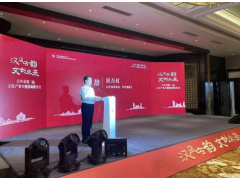To illustrate industry transformation, the book printing industry may be a good example, where the production process has completely changed and continues to evolve, largely driven by a complete digitalization journey. The drupa exhibition is approaching again, and many people are questioning the reason for coming to this exhibition again after eight years.
Printing service providers (PSPs) have continued to invest despite market challenges such as paper shortages and the energy crisis after several open days were held during the coronavirus pandemic after suppliers were able to showcase their technology through online demos. On the other hand, I believe that generating new ideas, building visions, sharing professional experiences and making connections is now more important than ever. Market dynamics are constantly evolving and structural changes are profoundly transforming the graphics industry. That's why a visit to Drupa makes sense.
One of the big changes we have witnessed in recent years has to do with the demand for books. According to various statistics, sales are growing in both Europe and the United States. However, traditional bookstores and supermarkets are losing market share as online and direct sales channels become increasingly popular with consumers, accounting for more than 45% of publishers' total revenue. The power of the “BookTok” trend, which has propelled certain titles from relative obscurity to bestseller lists, is causing publishers to rethink their marketing strategies, especially for niche titles. To effectively manage such demand, accurate forecasting becomes critical. Publishers need to serve the market on time while avoiding overprinting beyond demand.
Sustainability in the publishing industry is becoming a top priority. Technological innovation and the use of local printing facilities can help reduce overproduction and reprints, and solve the problem of returns. These challenges can also be reduced by adjusting print runs based on booking data. However, smaller book publishers may not have access to adequate technology and risk inventory shortages.
Book publishers are also exploring ways to reduce paper use, such as moving book annotations and bibliographies online (accessible via QR codes) or optimizing translation selections to reduce word counts. Form optimization is another option, where small form changes (such as slightly smaller pages) can significantly reduce paper consumption. Additionally, increasing delivery efficiency and optimizing shipping are drivers of sustainability that require strong system integration between retailers, publishers, distributors and printers.
Finally, the acceptance of digital printing of books has been established. Inkjet technology is highly productive and reliable, with a standard uptime of 9%. The crossover point between analog and digital is approximately 6,000 black and white copies and 3,000 color copies. From a quality perspective, many inkjet solutions are capable of printing on coated and uncoated media, producing results that are comparable to offset printing. However, some analog printing suppliers (such as Timpsons) have exited the market, with the last Timpson presses being built in 2006, making the digital transition a better option for printing books in the near future.
As a result, some book printers are pursuing new value propositions and services focused on on-demand production of individual books, short service level agreements (SLAs) from order to shipping, and digital integration with publishers and distributors. These companies invest not only in digital equipment but also in software business platforms, convinced that strong automation is the key to competitiveness and profitability.
But how do printers embark on their digital journey? The market offers a variety of solutions, from affordable options to more expensive options. While many of these solutions excel at managing specific processes (such as imposition, order management, archiving, or job tracking), they often require significant investments in integration and customization. Digital vendors do offer some solutions to enhance their equipment, but finding proven workflows to automate the entire book printing process end-to-end remains a challenge.
In fact, automation covers a variety of functions, from sales to management, from production to logistics, from data security to quality management. This means that an integrated book printing business management software should provide the following functions:
Automation of managing accounts and orders: Sales teams can receive orders and generate quotes through a portal, saving time and speeding up service rather than relying on emails, phone calls and scheduling quotes. Automated receipt of documents, preparation for archiving and printing.
Preflight automation: If a customer uploads a file without corrections, the system should send out an alert, allowing the customer to correct the problem themselves.
Automation of job management and monitoring, from single book production to mass printing: the software should collect orders and batch process them based on paper type, print quality and binding requirements. At the same time, printed webs should move seamlessly through the production process via job lists, ensuring complete control and production flexibility from single books to high-volume production.
Automation to track orders and shipments: once produced, batches should be easily trackable, allowing book printers to schedule shipments and publishers to monitor all operations.
Finally, a robust software platform should be compatible with different press and finishing equipment setups while maintaining independence.
However, investing in digital technologies requires in-depth IT knowledge at the company level and the establishment of a strong internal IT department. only a few printing companies have this capability. Often, these companies originated in the transactional printing business, but despite declining revenues, they often struggled to step out of their comfort zones. Additionally, many book printers have moved to digital printing but with a tunnel vision, focusing solely on reducing costs rather than adding value to their customers, essentially using digital technology as an analog replacement.
Other printers are starting to make their own moves. These innovation-driven companies, such as Italy's Rotomail, are able to bring application solutions to the market before others, taking an idea that essentially already exists and making it a reality with their home-made application solution Bronte. These companies foster an environment that is friendly, open, and curious because real innovation begins with the participation of people both inside and outside the organization. For them, partnerships represent real opportunities.
Everyone attending drupa 2024 will have a specific agenda. However, for the book printing market, building relationships and partnerships will be strategic. Digitalization continues to accelerate, and automation plays an important role by coordinating software development of components provided by different suppliers.






